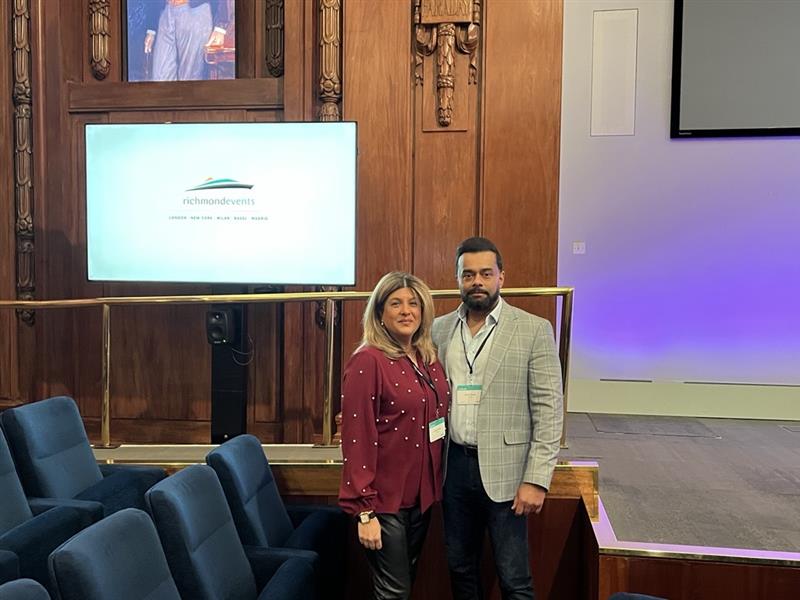
You know the type. The “natural leader.” Charismatic. Strategic. Inspiring. Probably drinks black coffee and runs marathons before breakfast.
Here’s the problem; they’re rare. Like, unicorn levels of rare. And if your leadership strategy is built on waiting for one to show up, you’re going to be waiting a while.
Leadership development isn’t about finding unicorns. It’s about growing horses that can run fast, think smart, and not trample the team on the way to the finish line.
The Real Reason Your Future Leaders Are Quiet Quitting
It’s not because they’re lazy. Or entitled. Or addicted to oat milk lattes.
It’s because they’re stuck.
They’ve got ideas, energy and potential. But no roadmap, no support, and no clue how to go from “I think I could lead” to “I’m trusted to lead.”
And when people feel stuck, they don’t shout about it. They drift. They disengage. They update their LinkedIn profile and start replying to recruiters with “open to opportunities.”
Leadership Isn’t a Promotion — It’s a Practice
You don’t become a leader when someone gives you a title. You become a leader when you start acting like one, and when someone notices.
That’s why leadership development should start early. Before the promotion. Before the panic. Before someone’s managing a team and Googling “how to give feedback without crying.”
Give people the tools. The space. The confidence. Then watch what happens.
The Manager Myth: Promoted but Not Prepared
Let’s talk about managers. The ones who were brilliant at their job, got promoted, and now spend their days juggling spreadsheets, performance reviews, and existential dread.
They didn’t get worse. They just didn’t get trained.
According to Gallup, only 18% of managers have the natural talent to lead. The rest? They need help. Coaching. Development. A safe space to say, “I have no idea what I’m doing.”
And that’s okay. In fact, it’s exactly where growth starts.
The “Accidental Leader” Epidemic
Now here’s another type of leader you will know. The ones who got promoted because they were good at their job, not because they were ready to lead.
Now they’re managing people, budgets, and expectations with no training, no support, and a growing sense of dread.
It’s not their fault, it’s the system. And it’s why leadership development needs to be baked into progression, not sprinkled on top like parsley.
Leadership Development for Introverts
Not all leaders are loud. Some are quiet. Thoughtful. Observant. They listen more than they speak — and when they do speak, people lean in.
Introverts make brilliant leaders. But they’re often overlooked because they don’t shout “pick me!” in meetings.
Leadership development should help them step into their style — not force them into someone else’s. Because confidence doesn’t always come with volume.
Leadership Development That Isn’t a Waste of Time
Here’s what doesn’t work:
- One-off workshops with motivational quotes and lukewarm coffee.
- E-learning modules that haven’t been updated since 2012.
- “Shadowing” someone who’s too busy to explain what they’re doing.
Here’s what does:
- Real coaching — like the kind our wonderful Instep trainers deliver, helping leaders build resilience, agency, and actual self-awareness.
- Stretch projects — where people get to lead something, mess up a bit, and learn fast.
- Peer learning — because leadership is lonely, and talking to others helps.
Leadership Is a Team Sport
Forget the lone wolf narrative. The best leaders build other leaders by delegating, mentoring, and asking for help.
So if your leadership development plan (or learning & development strategy) is focused on individual brilliance, you’re missing the point. Build networks. Communities. Cultures where leadership is shared, not hoarded.
That’s how you scale it and create leaders across all departments of your business.
Leadership Development in Hybrid Teams
Leading a team you only see on Zoom? That’s a different ball game, and one that we’re familiar with here at Instep.
In that case, you need clarity, trust, and communication that cuts through the static. You need to spot burnout through emojis and silence, which means learning to lead without hovering.
Leadership development should reflect this. Because hybrid or remote work isn’t going anywhere, and neither is the need for leaders who can handle it.
What Employees Say Leadership Looks Like
Forget the textbooks for a minute, and ask your team.
They’ll tell you leadership is:
- Listening.
- Backing them up.
- Giving clear direction.
- Not panicking when things go sideways.
If your development programme doesn’t teach these things, it’s probably missing the mark. Because leadership isn’t just about theory. It’s about how people feel when they work with you.
The Danger of “One-Size-Fits-All” Leadership Training
If your leadership training feels like a school assembly, same slides, same stories, same awkward icebreakers, it’s probably not going to work.
People lead differently. They learn differently. They need different things.
That’s why at Instep, we tailor leadership training to align with your business goals.
If you’re creating internal training, then personalise it. Make it relevant to what’s going on in your company. Because generic training creates generic leaders, and nobody’s inspired by that.
The ROI of Leadership Development
Still need to convince the finance team?
Try this: companies with strong leadership development are 4.2x more likely to outperform financially (DDI, 2023). They also retain talent, build better cultures, and adapt faster to change.
So yes, it costs money. But not developing leaders? That costs more.
Luckily though, you can use the Apprenticeship Levy Fund to your advantage.
Leadership Development Is Culture in Action
You can’t just outsource leadership. It has to be part of your culture.
When people see that leadership is valued, developed, and rewarded, not just reserved for a select few, they step up. They take ownership. They lead.
And that’s when culture shifts from posters on the wall to real behaviours in the room.
Grow Your Own
Stop waiting for the perfect leader to walk through the door. Start growing them from the inside.
Because the best leaders aren’t found. They’re developed. So grow them with intention, with investment, and with the kind of support that turns “I think I could” into “I know I can.”
And that’s when the magic happens.
Get in touch to speak to an education consultant at Instep, and learn how to your get your leadership development strategy right.


